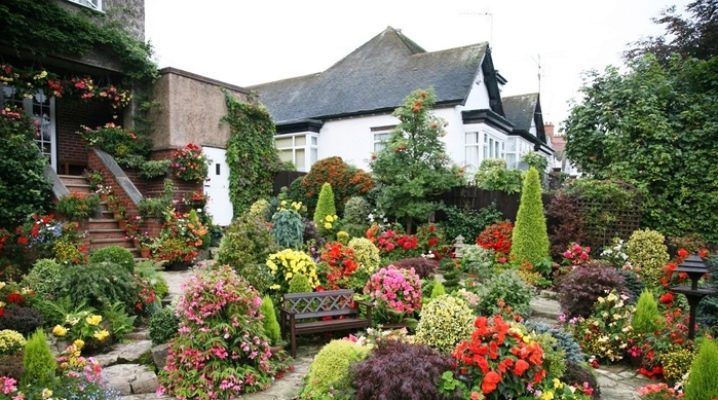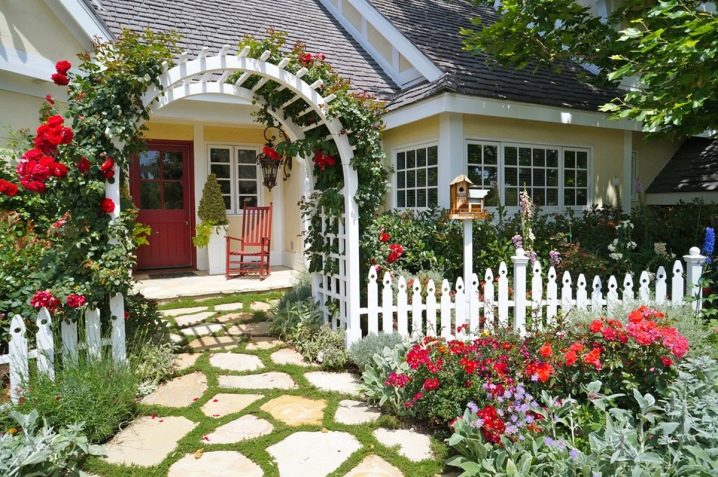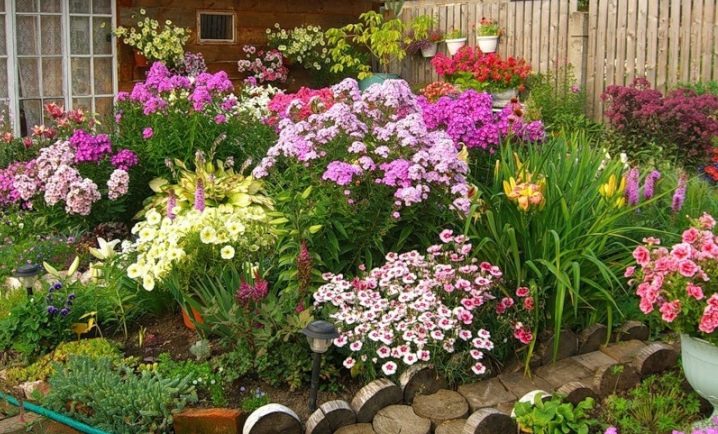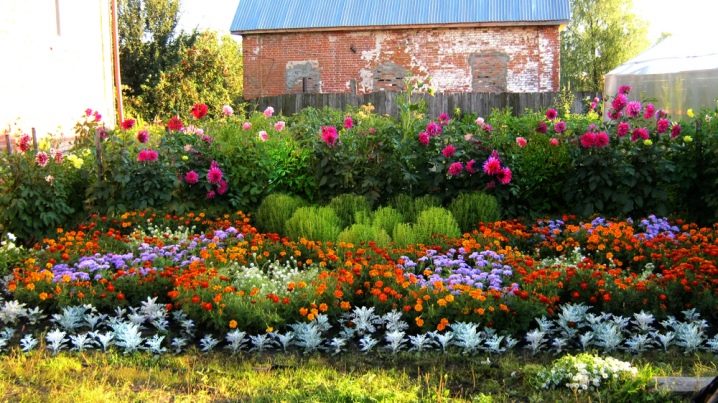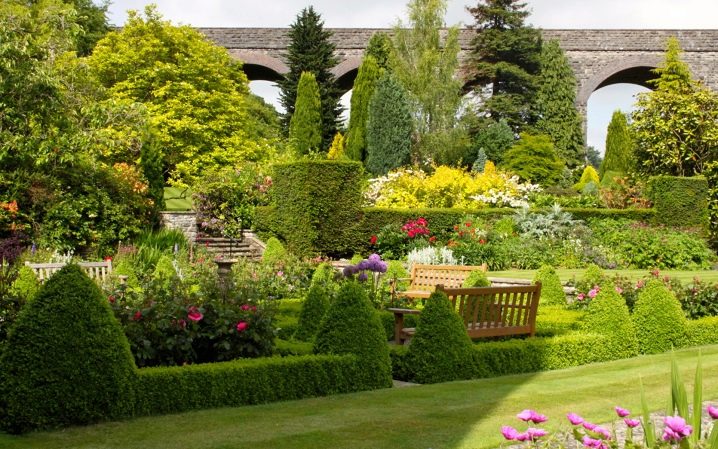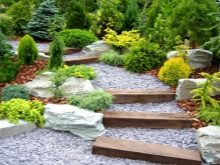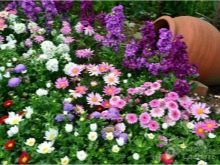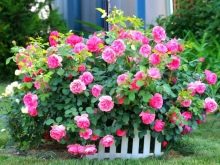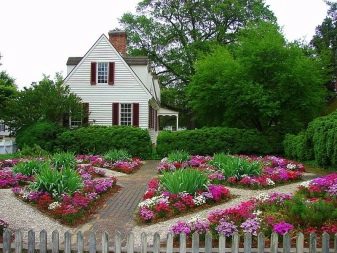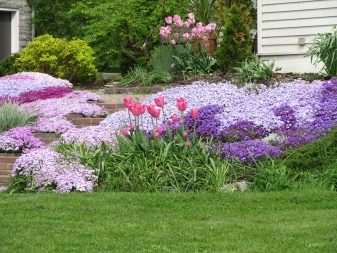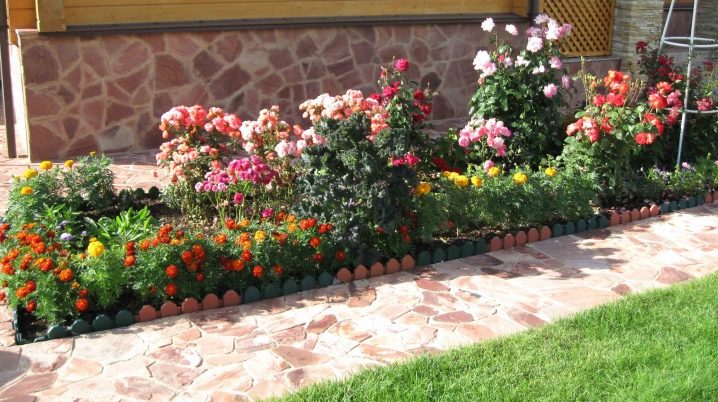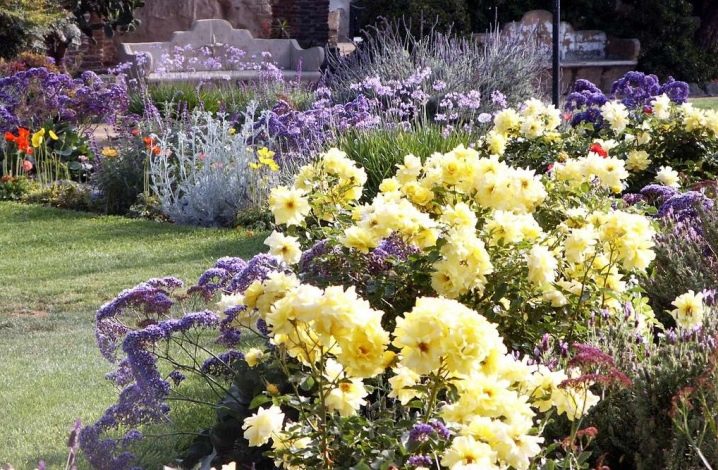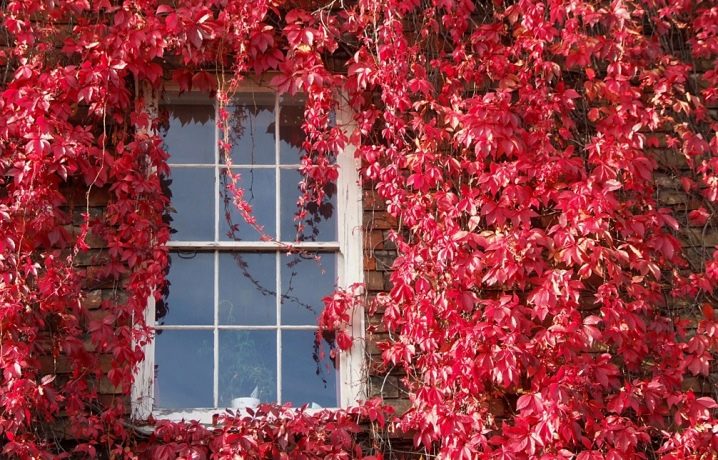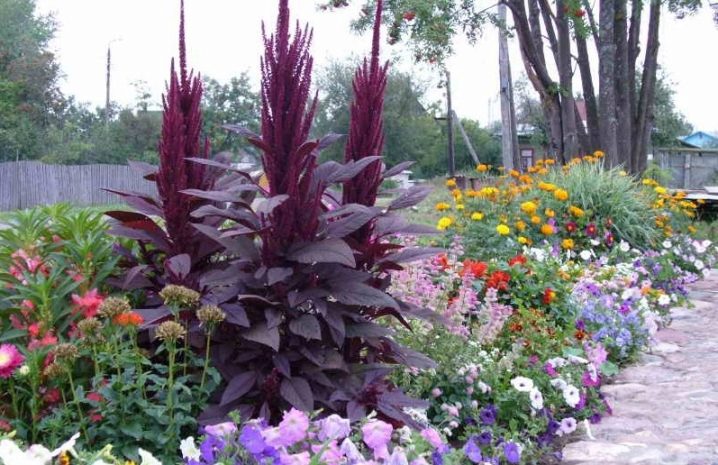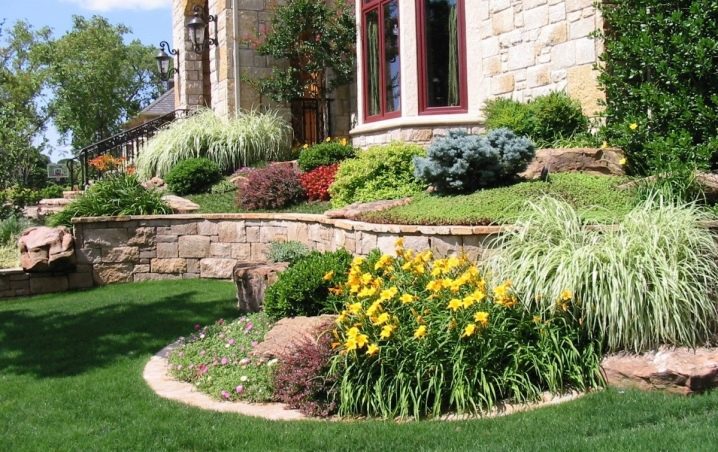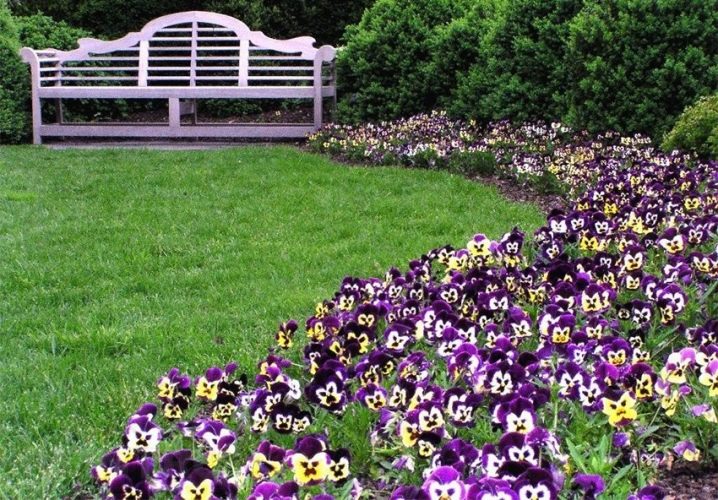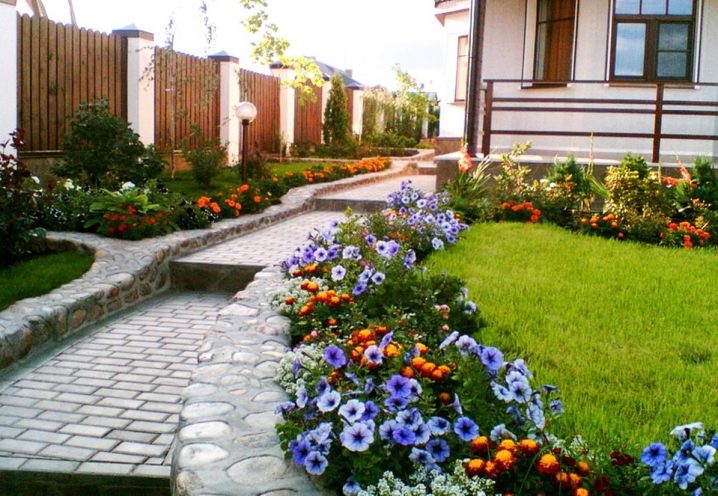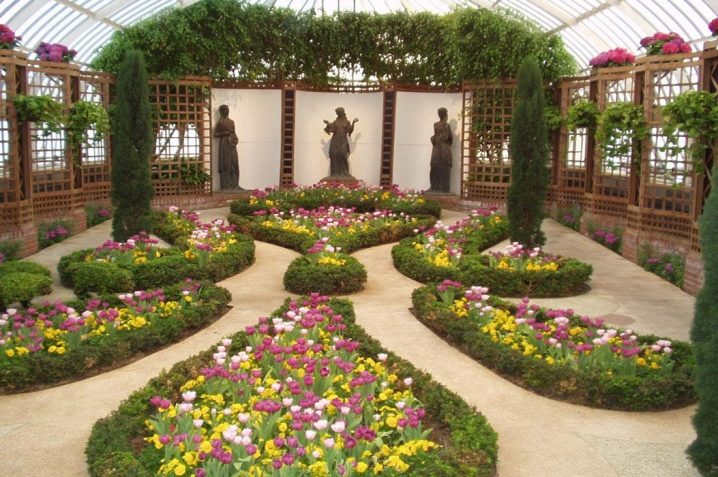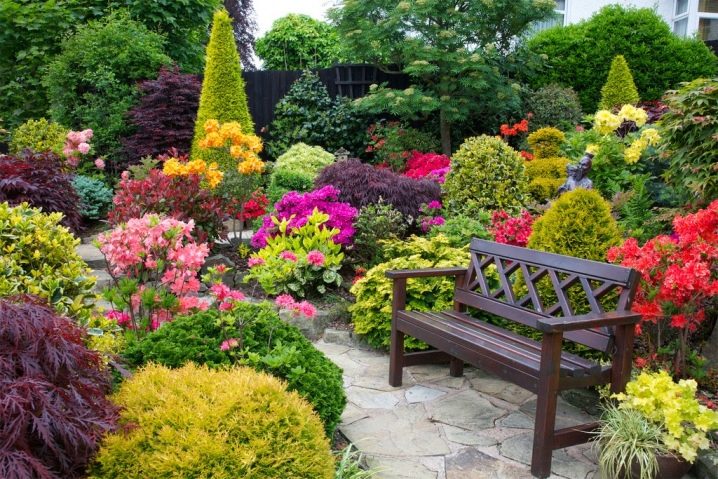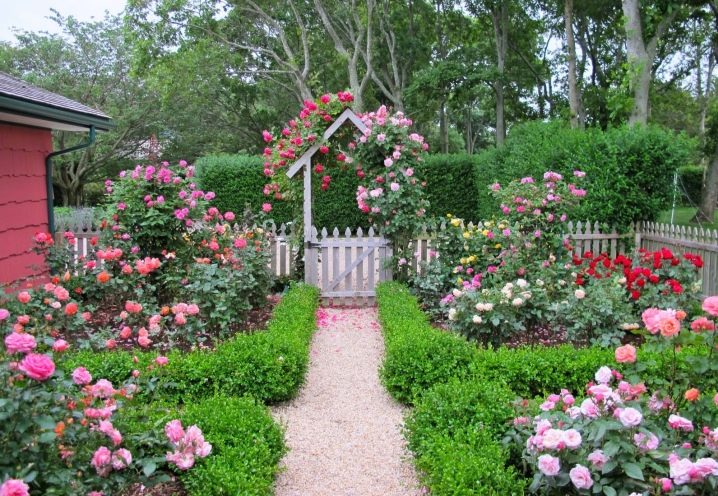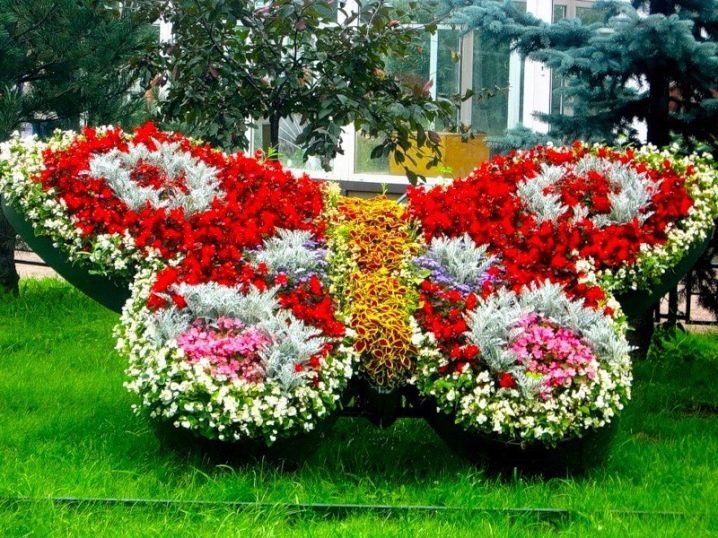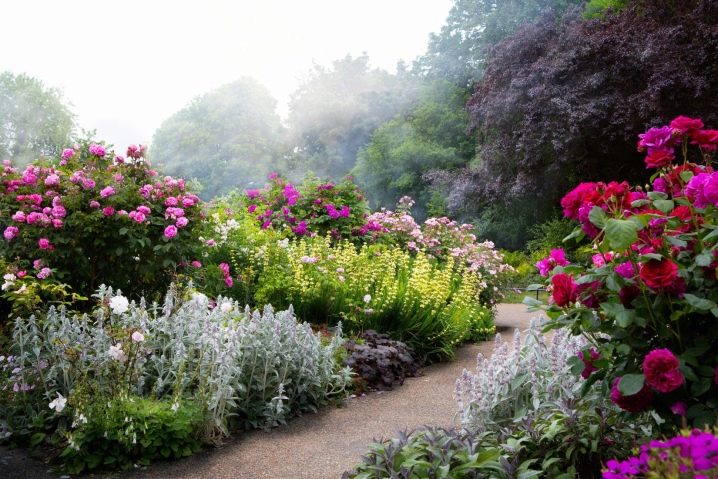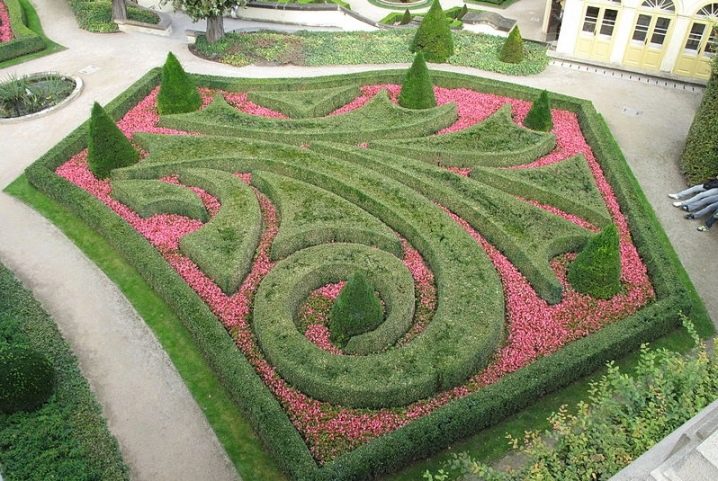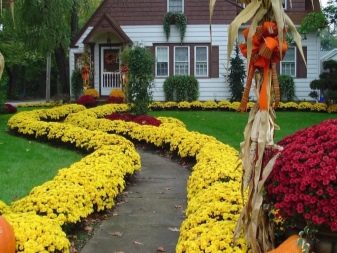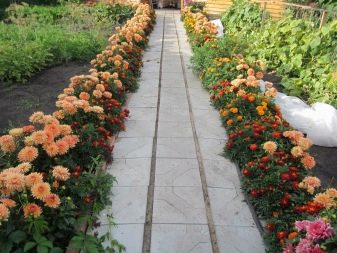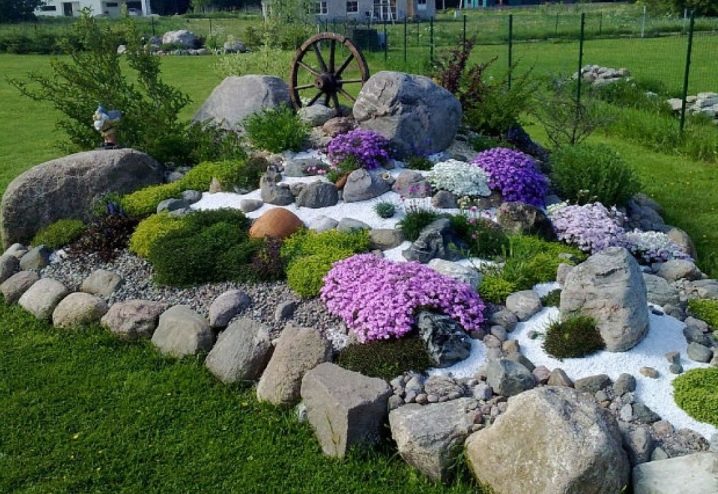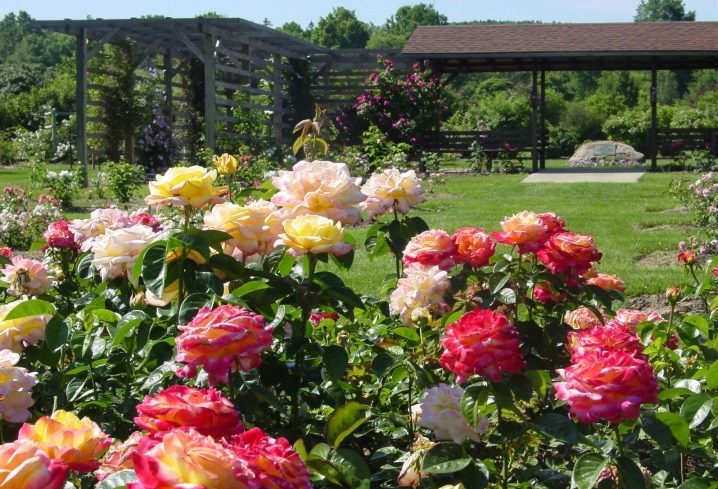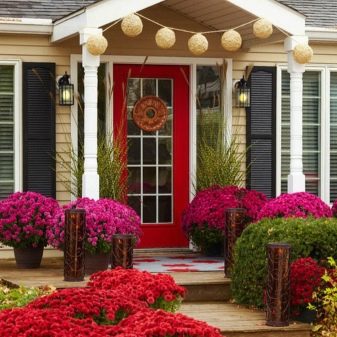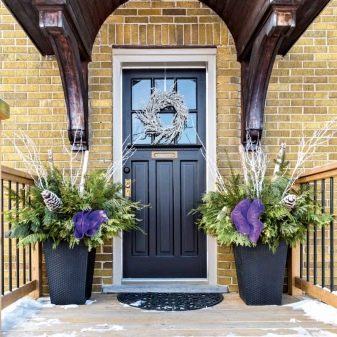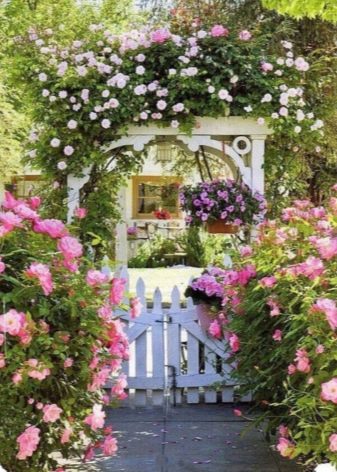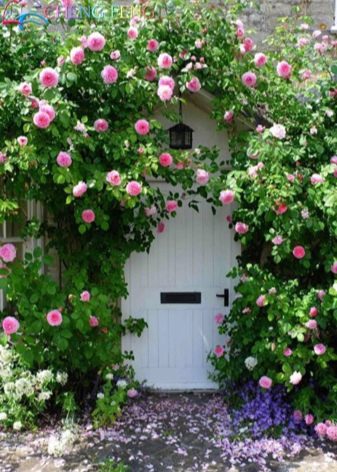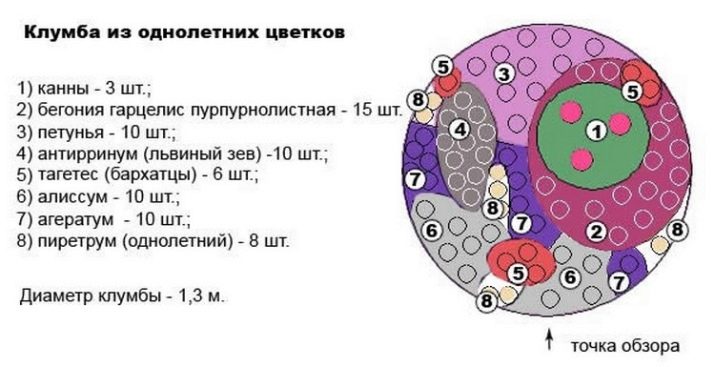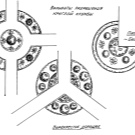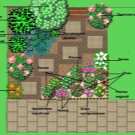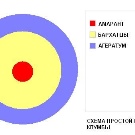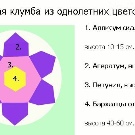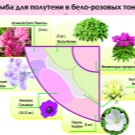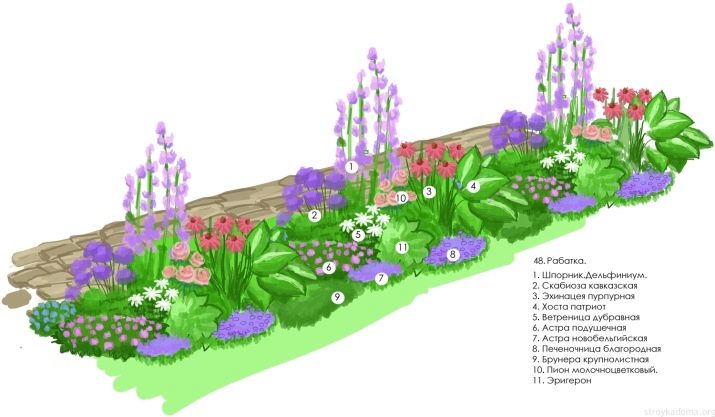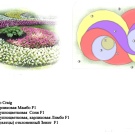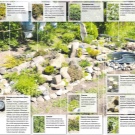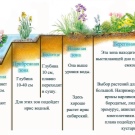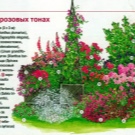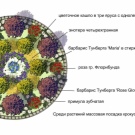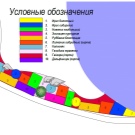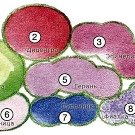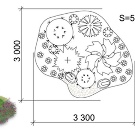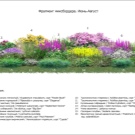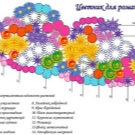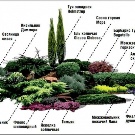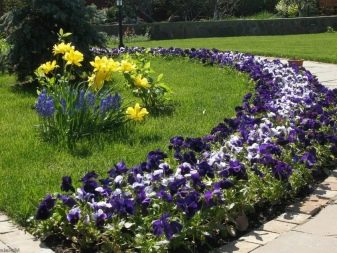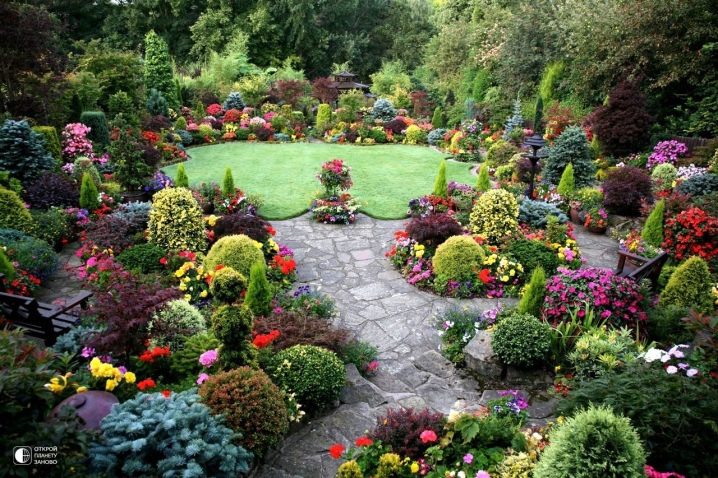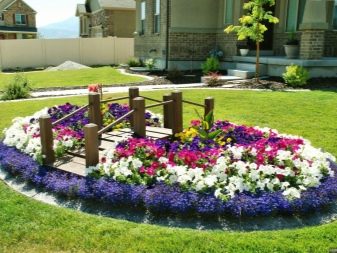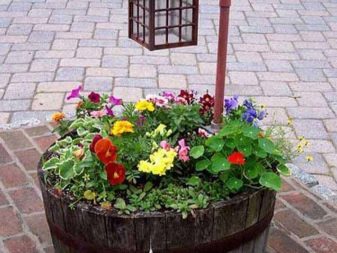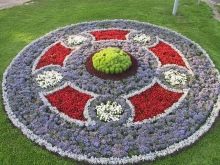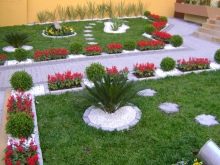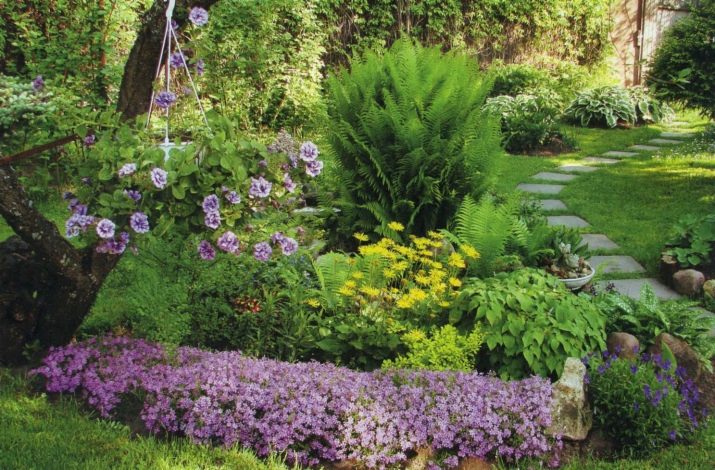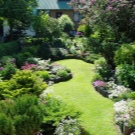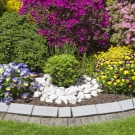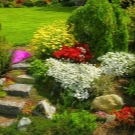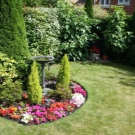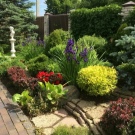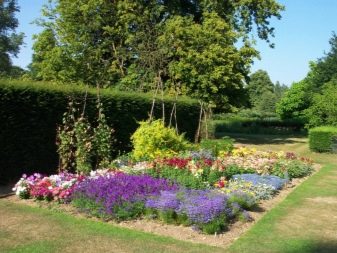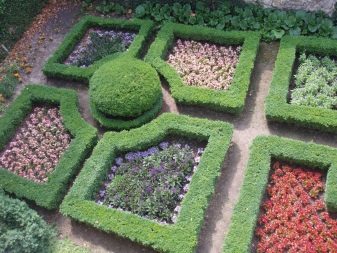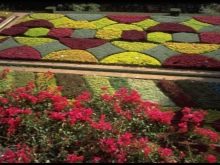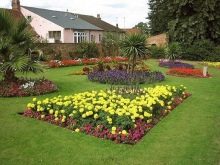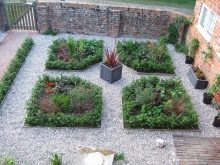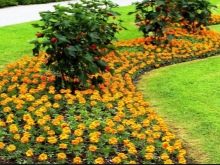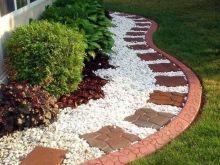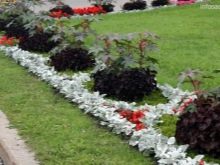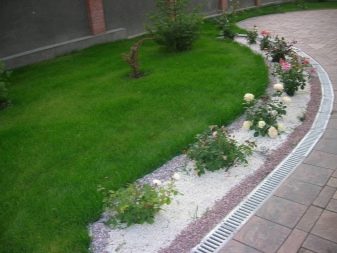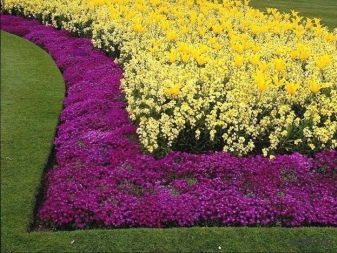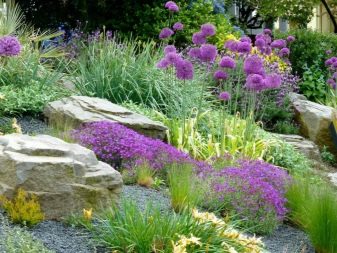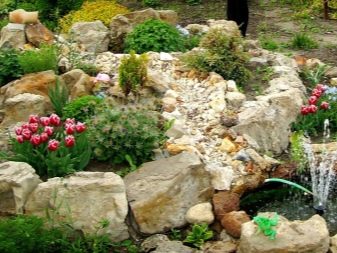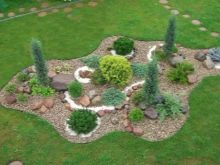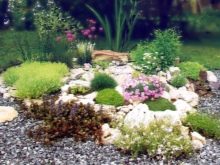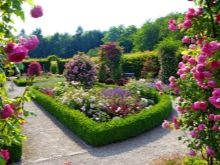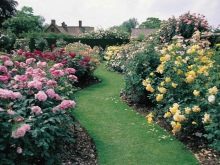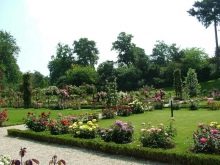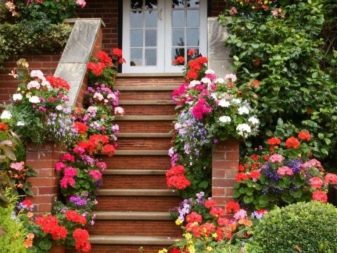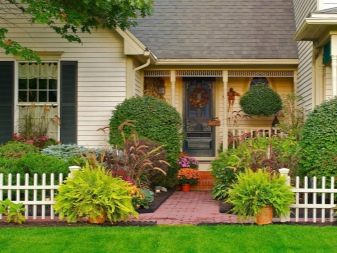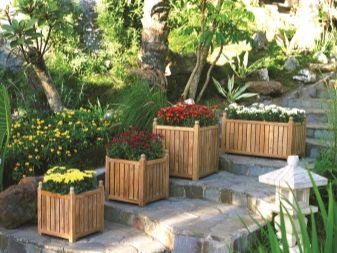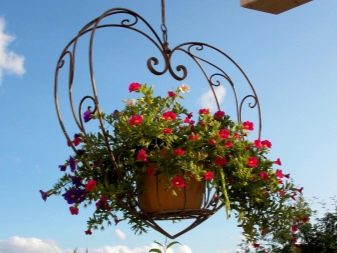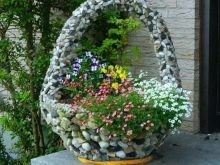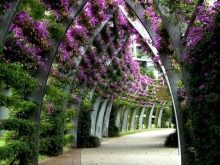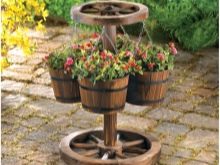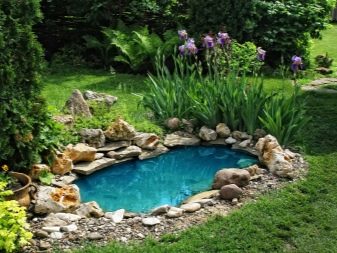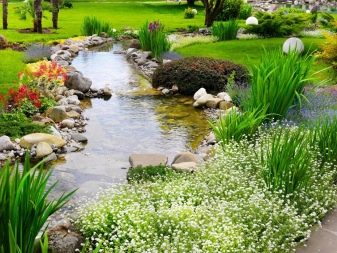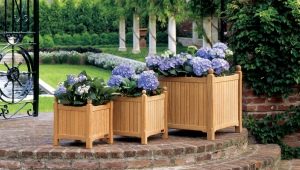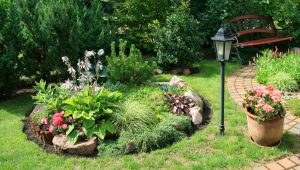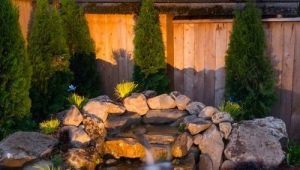Flower beds and flower beds in the country: we plant plants that bloom all summer
Everybody dreams to go out in the evening after a hard day’s work in a cozy picturesque courtyard, sit down with a cup of tea in the gazebo and enjoy the panorama of a well-kept garden. But nowadays, when the rhythm of life is so swift, it can be difficult to carve out a minute to bring your estate into the proper form.
To say goodbye to the dream of creating a paradise is not worth it. To do this, it is enough to correctly plan the territory, put a part of the soul into its design and plant plants that will please the eye all season.
Design features
To develop such a site design so that it not only is filled with bright colors, but is comfortable to maintain and functional, everyone dreams. To unlock the potential of a landscape designer and design a personal paradise on earth, it is important to develop an action plan. First you need to highlight the following for yourself:
- the intended purpose of the territory and zonal distinctions;
- the pros and cons of the existing functionality: housing, buildings, sidewalks, driveways, fences, water and drainage communications, lighting, perennial plantations;
- points with a problematic microclimate: illumination, windiness, complexity of the natural relief and soil;
- style, color perception of the situation;
- private wishes: benches, places of leisure and games, fountains, sculptures, flowerpots, additional decor.
Based on these data, you need to determine the locations of flower beds and plantations, determine their style, shape, size, make a color scheme. Choose the right plants.
Choosing plants
When planning the organization of garden space, you can not rely only on their visual preferences. Experienced gardeners and landscape designers recommend the following:
- find the right location;
- select those varieties of flowers, shrubs, trees that you would definitely like to see in your arsenal;
- develop landing schemes with elaboration of style and color accents;
- to arrange seedlings according to the plan of planting.
The choice of planting material can be carried out according to the following criteria:
- Trees, shrubs, grassy. Regardless of the available area on the site is to take every corner. But you need to think not only about the planar placement of landings, but also about the vertical, in order to fill all three possible high-altitude tiers. Trees and shrubs create a living screen, protect other saplings from returning frosts, are a snow retention band for the territory, create a favorable microclimate, attract birds.
Decorativeity of the site will give not only flowering copies of trees and shrubs, but also simple green plantings, as well as grassy, pleasing the look with different colors.
- Deciduous, coniferous. Giving preference to any one type, we make it impossible for our project to look even more impressive, since these specific features can be successfully combined.
- Annuals, perennials. In landscape design, there is a recommendation that it is better to plant the middle of the composition with one type of plant of this classification, and the edges with another.
Perennial - these are decorative leafy or flowering specimens that do not require annual planting, retain their effectiveness for several seasons in a row, winter well and require minimal maintenance.
Benefits of perennials:
- saving time - they will decorate the landing site for many seasons in a row, without a transfer;
- more resistant to short-term frost;
- financial savings - eliminate the need for the annual purchase of planting material;
- with each subsequent year they become more spectacular, they retain an attractive appearance longer, even after flowering, thanks to the greenery;
- bred a huge number of zoned varieties.
Annuals - this type of seedlings, the entire life cycle of which fits in one season. Without annuals, it is impossible to imagine a picturesque flowering canvas, because all summer they delight the eye with bright spots replacing each other.
Their advantages:
- lush and long flowering;
- convenient planting, often in the form of seedlings;
- demanding of environmental conditions;
- a huge number of species.
Having found the perfect balance between species and varieties, it will be possible to spend more time in the country to contemplate the beautiful flower paintings cultivated with their own hands.
Among other criteria are the following.
To size
The dominant plantings will be considered as large-area specimens - tall specimens or climbing on supports.
There are the following types of plants based on size:
- "Vyuny." The plants of this group are quite diverse. For the most part, they have flexible, long stems that require support. Prefer well-lit, often digging areas. The main common species: climbing rose, wisteria, girlish grapes, curly honeysuckle, clematis, ipomeya, sweet peas, decorative curly beans, hops, ivy.
- "Giants". Their height varies from 90 centimeters to two meters. Almost all varieties belonging to this group do not tolerate shade and prefer sunny places with loose treated soil. The most spectacular: stock-rose, tricyrtis, sunflower, basil, amaranth.
- "The Middle". The adult plant reaches the size from 30 to 80 centimeters. Often used for individual planting or as a middle tier in various compositions. The most common names are: daylily, yarrow, Rhodiola rosea, irises, phlox, cornflower, astilbe, peony, some varieties of marigolds.
- "Dwarfs". The plant in adult form grows no more than 30 centimeters. Often used for rock gardens, rockeries, curbs. To obtain the best result, the principle of accuracy of planting should be observed. Examples: pansies, periwinkle, phlox, gentian, marigold, nasturtium, some varieties of verbena, cineraria, chives.
Features of growing "dwarfs":
- It is necessary to use fertilizers with caution - their overabundance can cause uncontrolled growth spikes, as a result - loss of decoration.
- Strongly affected by sunlight: you need to carefully select for each class or shaded areas, or sun.
- Very sensitive to soil moisture.
- Require regular loosening and removal of weeds.
- It is necessary to remove dead and diseased plants in time.
By the growing season (early, middle, late)
For each plant there is a month of flowering:
- March-May: snowdrop, scilla, crocus, hyacinth, muscari, tulip, narcissus, primula, anemone, lilies of the valley, bulbodiom, crested, goose-onion, hiondox, hellebore, liverwort, pushkinnia, eranthis, medullum, juvenile, adyonus, zykushyk , iridodictium, marigold, hyacintoid, brunner, tulip, narcissus, hazel grouse, birdwatch.
- June: Turkish carnation, clematis, daylily, liatris, lilies, lupine, foxglove, peony, rose, eremurus, iris, aquilegia, cornflower, verbeynik, gravilatus, geranium, poppy, devyasil, lihnnis, mullein, pyrethrum, sunflower, mantle, poppy, povor, grapevine, poppy, lihnis, mullein, pyrethrum, sunflower, poppy, graviatus, geranium Obrietta, Kislitsa, yaskolka.
- July: begonia, marigolds, verbena, hydrangea, ipomoea, campsis, lavender, petunia, stock-rose, wide-bell.
- August: Astra, Ageratum, Brachicomea, Gladeolus, Coreopsis, Cosmea, Pelargonium, Salvia, Phlox, Zinnia.
- September: amaranth, hibiscus, gomfrena, dendrantema, goldenrod, lyriopa, stonecrop, celosia.
- October November: nasturtium, snapdragon, vervain, boneset.
At any time during the planting season, you can pick up plants that will warm your soul both on a sunny spring day and on a gloomy autumn evening.
By preferred microclimate
It is understood that wet areas are often located in the shade, so moisture-loving plants prefer shady wetlands. And vice versa. Drought-resistant: arabis, verbena, phlox, alissum, poppy, echinacea, succulent plants. Moisture-loving plants can also be divided into those who love wet land, growing in wetlands, flowering and growing directly in the water.The following can be mentioned: forget-me-not, bathing, astilbe, peony, gunner, rogers, rhubarb, buzulnik, iris, marigold.
Forms of flower beds
Speaking of form, a person is likely to begin to represent geometry: round, square, rectangular. But in landscape design is much more complicated. For a start, it is worth deciding whether the flower garden will be the embodiment of any dominant (length, height, area). To do this, use planar or three-dimensional, horizontally or vertically oriented variants of landings. Next you need to specify the place of creation of this object - accommodation with a circular view or one-sided. Well, the final touch should be the type of flower garden. They can be of the following types:
- Flower bed - a small, often fenced and raised above the level of the surface area of a clearly defined form, on which it is customary to plant ornamental plants. Distinguish: beds of the correct geometry and irregular shapes, curly beds (butterflies, hearts), "flowing" forms (streams, rivulets).
- Mixborder - flower composition, which is a combination of plants planted in several tiers, which form a continuously flowering multi-row pattern. Distinguish: English, meadow, village, garden.
- Parterre - This is a complex flower garden, which includes a whole composition of several types of flower beds and properly selected decorative elements. The parterre can be: floral or mixed, lawn, grassy. It has a planar landmark, most often presented in a rectangular shape. The accuracy of landings guarantees the ideal design of the pattern. Plants are used mainly undersized.
- Rabatka - an elongated flower bed located along paths, fences, buildings. Length up to 15 meters, width from half a meter to two meters, often embedded in the lawn space for the separation of zones or to create clarity of lines and shapes of the site. There are one-sided and two-sided, small (2-4 rows of plants) and wide (up to 7 rows), with a symmetrical and asymmetrical pattern, whole and intermittent. According to the design principle, you can select floral, carpet, ornamental.
- Border - a flower bed of a special type, which is characterized by: small height, width from 10 to 40 centimeters. It is not an independent element of landscape design, but serves only to separate or highlight something. The main purpose is to emphasize the completeness of the flower bed, to serve as a frame or a frame.
- Rockery - a modern element of landscape design, designed to combine the beauty of living and inanimate nature (stones and plants). It can be made in Japanese, European and English styles. Can be placed on a flat or slightly elevated platform. Types of rockeries: stable, temporary, changeable.
Saplings for such a flower bed is better to pick up slow-growing undersized.
- Rose garden - A special type of flower garden, where mainly different varieties of roses are located, differing in flowering period, shapes, sizes. You can organize a regular, landscape, mixed rose garden and one in which rose-tapeworms.
- Vases and containers - This is a special kind of flower garden, which is convenient for its mobility. It can be placed anywhere in the manor or balcony, will be effective in any area and at any time interval - from early spring to late autumn. It can complement and decorate empty flower beds, roam in various compositions of the manor.
- Palisade - This is the space from the road to the door of the house on which it is customary to place flower beds, paths, garden design items, benches. They can be divided into open, closed, Russian, European type.
Landing patterns
Flower gardens can be made in any technique and form, include plantings of one-year-olds and perennial crops, but the obligatory principle of their development should be accessibility of the review. The most convenient and visual tool for the implementation of the plan will be the generation of a plan-landing scheme. When thinking about a blooming composition, it is worth developing a plan indicating the placement of each element in the proportions of the occupied area and color accents.
Designing a scheme from scratch often does not go smoothly, therefore, if your level in botany and landscape design is close to zero, it is recommended to use already developed constructions, making their own adjustments to them later.
Options schemes for different types of flower beds:
- Mixborder
- Parterre.
- Rabatka.
- Rockery
- Water.
- The Rosary
Expert advice
Try to form a flower garden so that the seedlings complement each other the whole season. When selecting the number of planted plants must comply with the measure. Planted plants and make up of them need to composition given their subsequent growth, It is important to consider their future dimensions.
The volumetric group of plants will always look more advantageous than the separately planted specimens. When forming a flower bed, focus on the selection of plants with the same growing conditions. To work on the creation of a flower garden was not in vain, you need to take care of him - loosen, water, feed, weed, form each plant for the benefit of the general form.
When choosing the flowering time, you should try to place early-flowering varieties along the edge, and later ones in the center. Tall specimens are planted so that they do not obscure low and creeping varieties. The center of the composition is considered to be the best place for them; you can arrange the background for them. In their shade, you can plant shade-tolerant plants. But for the sun love you need to prepare the most illuminated area in the landings.
To bloom plants lasted longer, you need to remove faded inflorescences.
Beautiful examples
And in order to create an image of an ideal design project for the estate in your head, you can use collections of flower beds and flower beds, which offer famous designers or a variety of design studios:
- Flower beds. These flower gardens deserve the right to be called each individual composition, focusing all attention on themselves. An interesting option, quite innovative, can be considered a vertical flowerbed - a living wall.
- Mixborder. Nothing will liven up a green lawn plantation more than a flower oasis of mixborders. They will also be pleasing to the eye, keeping you company while walking along the picturesque garden paths.
- Parterre. The clarity of geometric forms, intricate borders and the severity of each element of the parterre garden will make the guests take for granted aristocratic inclinations, taste in landscape design and the garden and garden talents of its owner.
- Rabatka. Another islet in the green sea of the lawn. Rabatka is a bright spot that fills the surrounding space with dynamics and colors.
- Border. Like the original frame, the border is able to shade and complete any composition. Sometimes the border itself can be considered a separate element of the decor.
- Rockery and rock garden. This composition is always filled with life, despite the abundance of monolithic objects. The elements of inanimate nature in such projects come to life themselves, emphasizing the quivering beauty of all the plants surrounding them.
- The Rosary Nothing decorates a garden like the queen of flowers.Her colors are amazing, the aroma is drunk, and the riot of shapes and colors attracts rapt views.
- Palisade. What could be closer to the heart of a Russian person, if not a picturesque palisade. Going to such a well-groomed and fragrant garden, I want to certainly look to the owners for a cup of tea.
- Containers and vases. Mini-flower can be created in the modern limited world of concrete and asphalt. This will require very little space and a picturesque capacity. Containers and vases have long been turned into the category must have of any hostess. (Fig. 86-89) Vertical or mounted gardens are designed to decorate any territory limited by spatial frameworks. This method of gardening today is successfully used in large cities of the East and Europe.
- Water. Natural or artificial water surface is a flight for fantasy. Here not only the duckweed flashes and fish frolics, a life full of forms and colors can reign here.
On how to choose the design of the flower garden and arrange it yourself, see the next video.
